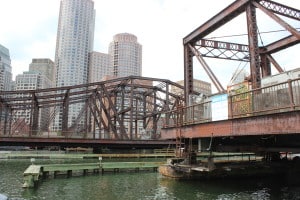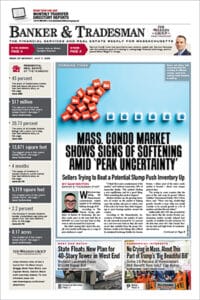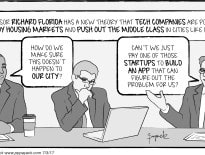In the recently released ULI report, “Active Transportation and Real Estate,” ULI explores the nexus between walking and bicycling and real estate development. Half of U.S. residents now say that walkability is a high priority when considering where to live and bicycling is the country’s fastest-growing form of transportation for commuters. In many cities, younger urban dwellers are opting for non-motorized transportation, and developers are seizing on opportunities to leverage the growing interest in biking and walking.
Greater Boston is uniquely positioned to take advantage of this emerging trend while still in the midst of this current building boom. Developers and city leaders have new incentive to re-examine how walkways, bikeways and parkways are built and utilized in new and existing neighborhoods. And there is ample data to demonstrate the positive impact active transit-oriented development has on property values, retail sales and overall economic development.
The number of people traveling to work by bike increased by nearly two-thirds between 2000 and 2014 according to the U.S. Census Bureau. Neighborhoods that connect to transit and trailways are demonstrating higher values. For example, a 2013 REMAX study of Atlanta neighborhoods found that homes near the Beltline – a transit and trail loop of pedestrian and bicycle trails – were selling within 24 hours. Before the Atlanta Beltline project, homes in the same area sat on the market for 60 to 100 days. Another study, this one by the New York City Department of Transportation, found rents for apartments along Times Square pedestrian areas and bicycle lanes rose by 71 percent.

The city of Boston is considering reopening the Northern Avenue bridge in the Seaport to pedestrians and bicyclists.
Sensing the trend, the city of Boston has already committed to expanding active transportation options for its residents. Boston saw an 82 percent increase in the number of people biking to work between 2008 and 2011, and the city transportation plan Go Boston 2030 calls for increasing commuting by bike by fourfold.
Among the city’s neighborhoods, the Seaport may have the greatest opportunity to creatively about the future of local transportation. Traffic clogs the routes into and out of the Seaport and the Silver Line operates at 123 percent of its maximum capacity through the neighborhood. But the city is considering plans to reopen the Northern Avenue Bridge for pedestrians and bicycles only. The land conservation group Trustees of Reservations is eyeing park space in the Seaport and WS Development is proposing a new public promenade called Harbor Way.
Public and private investments in active transportation systems create advantages across the economic and civic spectrums – from reducing traffic and pollution to increasing retail visibility and sales volume. Walking may be as old as time, but blending active transportation with real estate development promises to be the next frontier. Nowhere is that more understood than in Boston, where history and innovation cross at virtually every intersection.
Manikka Bowman is manager of policy for ULI Boston/New England.







